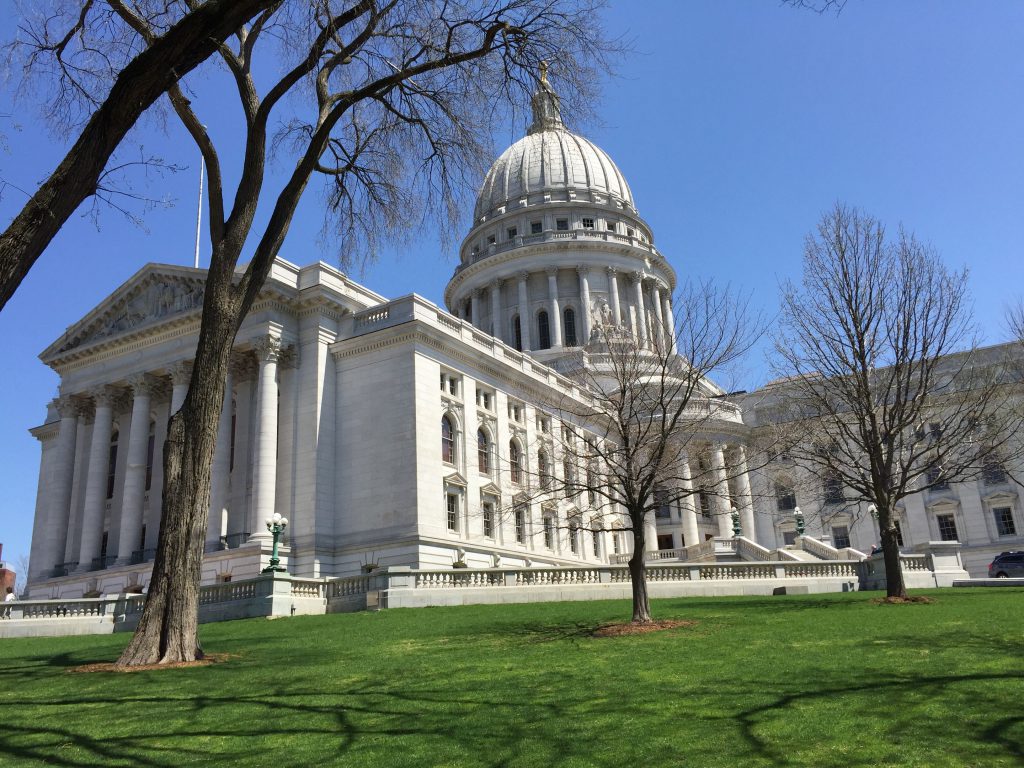Graying Demographics Drive GOP Tax Cut
Tax cut for retirees, who have the highest turnout in elections, adds new wrinkle.
Although Democratic Gov. Tony Evers has said he would veto it, the income tax-cut plan that Assembly Republicans hope to pass this week opens a major new debate over age-based tax policy. Compared to the earlier tax plan by Republicans, this one adds an exemption for retirees. Even if the plan doesn’t become law, there are two reasons why it’s important.
First, the number of Wisconsin residents over 67 — the age that Republicans use to determine who should have pensions and retirement investment earnings exempt from income taxes — is expected to increase by 57%, taking it from 980,000 to 1.54 million between 2020 and 2040, according to the state Department of Administration. That means 23.7% of Wisconsin residents will be at retirement age by 2040 – a significant jump from 17.7% in 2020.
Second: voters over age 65 have the highest turnout in elections.
The graying of Wisconsin has major implications for Wisconsin’s future workforce and the health care and housing industries. And, what will the tax burden be on the 76.3% of residents who are not retirement age by 2040?
Currently, about $900 million a year in Social Security benefits are exempt from Wisconsin income taxes; other tax-exempt federal pensions total $50 million more a year. Assembly Republicans would keep those exemptions.
The plan the Assembly may pass this week to exempt pensions and IRA and 401(k) investments for most residents over 67 would work this way, according to a summary from the non-partisan Legislative Fiscal Bureau (LFB):
Exempt from income taxes would be pensions and retirement investment income for couples, if both are over 67, with annual incomes of up to $150,000. The exemption for single taxpayers who are 67 by Dec. 31 would be offered to those with incomes of up to $100,000. Part-time Wisconsin retirees older than 67 could only qualify for the pension exemption on benefits paid by Wisconsin sources.
“No one who has worked their entire life in Wisconsin should be forced to move to another state because of our tax code,” said Republican Rep. John Macco, chairman of the Assembly Ways and Means Committee.
Republicans also want to fold the third highest income tax bracket into the second, lowering it 5.3% to 4.4%. That would be the rate for married-filing-jointly taxpayers with taxable incomes of between $18,240 and $405,500 and on single taxpayers with incomes between $13,810 and $304,170.
The highest tax bracket – 7.65% – would remain for single taxpayers with incomes of more than $304,170 and married-filing-jointly taxpayers with incomes of more than $405,550.
Overall, the combined changes would cut income taxes for about 1.7 million taxpayers who would get an average tax break of $772, according to the Fiscal Bureau.
The tax cut of Assembly Republicans must be backed by Senate Republicans and Evers to become law, which Evers vowed last week won’t happen.
“I’m not going to sign an irresponsible Republican tax cut that jeopardizes our state’s financial stability well into the future and the investments we need to be making today to address the real, pressing challenges facing our state,” the governor said.
That was a reference to a warning in the LFB memo about the future cost of the Assembly Republicans’ cut. “To the extent this projected demographic [aging] occurs, the cost of the proposed retirement exclusion would increase in the future.”
Evers said the Assembly Republicans plan also fails the fairness test he applied in July, when he killed most of a $3.5-billion income tax cut Republicans had added to the state budget. That plan he killed would have given taxpayers with incomes of more than $250,000 48% of the first-year cut of $1.3 billion.
Measuring the impact of the Assembly Republicans’ new proposal on taxpayers who owe income taxes, LFB estimated:
*Taxpayers with taxable incomes of between $100,000 and $300,000 are 32.4% of all filers, but they would get 53.3% of the projected $1.3 billion savings in the first year of the Assembly GOP plan.
*Taxpayers with taxable incomes of between $50,000 and $100,000 are 41.3% of all filers in 2023 and would get 25.5% of the projected $1.3 billion savings.
Assembly Republican leaders defended their age-based tax break. “We’re giving the governor a second chance to do the right thing,” said Rep. Mark Born, co-chair of the Joint Finance Committee.
Steven Walters started covering the Capitol in 1988. Contact him at stevenscotwalters@gmail.com
If you think stories like this are important, become a member of Urban Milwaukee and help support real, independent journalism. Plus you get some cool added benefits.
The State of Politics
-
A Wisconsin Political Trivia Quiz
 Dec 15th, 2025 by Steven Walters
Dec 15th, 2025 by Steven Walters
-
The Fight Over Wisconsin’s House Districts
 Dec 8th, 2025 by Steven Walters
Dec 8th, 2025 by Steven Walters
-
The Battle Over On-Line Betting
 Nov 24th, 2025 by Steven Walters
Nov 24th, 2025 by Steven Walters



















Republicans should think of reasons to get young people to stay.
Mass transit so they can stay on their cell phones.
Legalize Marijuana, from a person with no interest in smoking.
Abortion rights.
Daycare.
Healthcare.